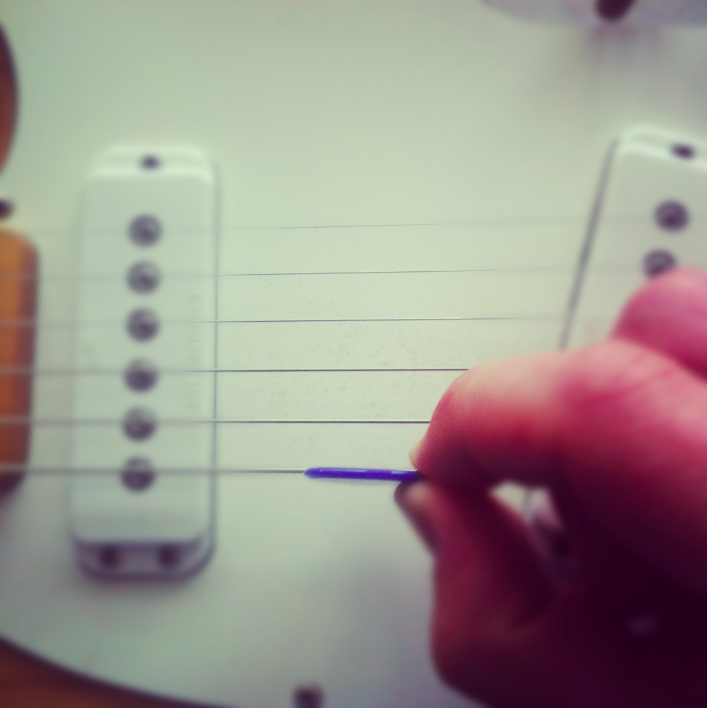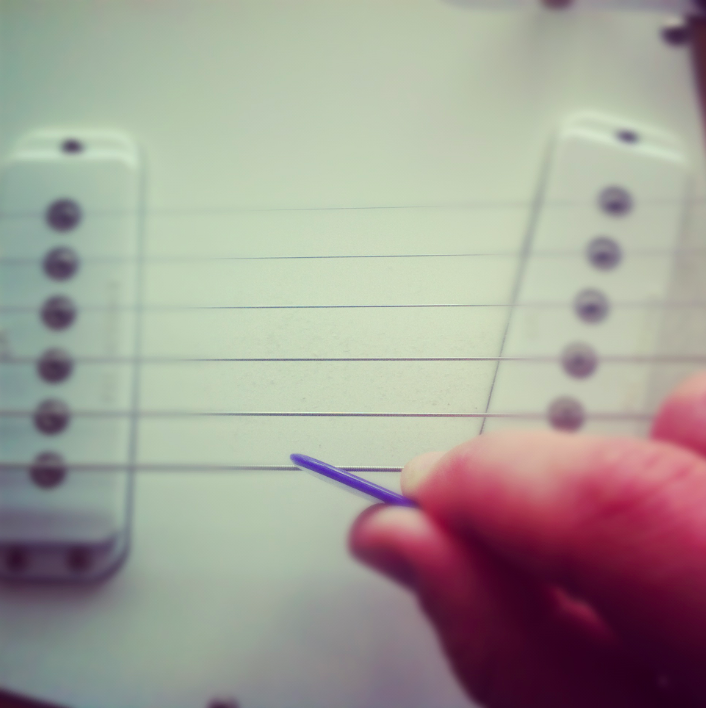How To Hold The Guitar Pick To Make Your Rhythm Guitar Playing More Fluently
The picking hand forms a big problem for many guitarists. This problem is caused by different factors. The left hand is sometimes being over-emphasized in instructional resources; many guitar exercises put the left hand in the middle of attention, while in reality it’s a bigger challenge to master the motions of the right hand.
So while it’s also important to always have your left hand fingers on time on the right strings in order to produce a fluent strumming pattern (this should be trained with specific exercises as well), in the following tips we are going to talk only about the right hand and how this hand directly influences your guitar tone and the fluency you play with.
How To Hold The Guitar Pick (For Optimal Tone)
First we’ll look at how to hold the guitar pick for optimal tone, because the correct way of holding the guitar pick is a really important factor in your guitar technique. Consequently, this is also the reason that many self-taught beginners run into troubles when they want to get to a more advanced level in their playing. They hit a brick wall in their playing and their technical progress comes to a sudden halt.
If you have the feeling that you often make mistakes in your playing or your guitar playing stopped progressing, the motions and the grip of the picking hand needs to be looked at since this is crucial to your technical growth. Since the topic of this article is ‘how to make your rhythm guitar playing more fluently’, for the reminder of the article I will be assuming that you do know how to correctly hold the guitar.
Nonetheless, we will look at the one factor of right hand technique that determines the tone that is produced and how the fluency you play with. This one factor is the angle in which the pick hits your string. This angle is different for optimal tone, then for optimal fluency.
Look at the picture below.

As you can see the pick is being held straight in relation to the string. There is no angle on the pick here.
Be aware of the fact that in these pictures the pick isn’t being held fully, like it should be hold (there’s too little contact between the fingers and the pick) to allow a clearer look on the angle of the pick.
How To Hold The Guitar Pick (For Optimal Fluency)
Now look at the picture below. The pick approaches the string in an angle of 15 – 20 degrees, which will produce a totally different tone and will also help you with playing rhythm guitar riffs (and also lead guitar parts) more fluently, because there’s less pressure from the string on the pick.

How Guitar Picks Influence Your Guitar Tone
Different picks produce different tones. Experimenting with factors such as different guitar picks, the amount of pressure you hold the guitar pick with and the angle in which you hit the string will give you a huge amount of options that you can use to produce different guitar tones. Different picks have different sensations. How rounded the edges are, what materials the picks are made of, etc. All comes in to play.
How Much Pressure Should You Use When Holding The Guitar Pick?
The amount of pressure you hold the guitar pick with affects both your tone and how fluent you play. Exactly how much pressure you use is determined by many factors such as the tones you want to produce and in which way the technicality of a given passage in the music asks you to hold the pick with a firm grip (such as in a fast succession of notes) or a loose grip (such as in casual strumming).
There’s no set answer to this question, but the following exercises will steer you towards experiencing the difference in tones that you can produce by altering the amount of pressure and angle on the guitar pick.
Exercises
Play a blues rhythm riff of your choice with the amount of pressure that you normally would.
- Now play the same riff, but hold the pick looser. Then play the same riff but hold the pick tighter.
- Also experiment with how hard/soft you hit the strings.
In addition to this, experiment with the angle in which the pick hits the string. When you don’t angle the pick you’ll hear a more full sound. If you pick under a 15-20% angle, the stroke might feel more fluent but the sound will be a bit thinner. The bigger the angle the more this is noticible.
Notice the difference in the tone that is coming out of your guitar or amplifier.
When you for instance hold the pick loose under an angle you can sometimes hear the plastic of the pick grasing over the metal of the string. When you use a firm grip, the sound is more ‘direct’.
Learn how to Master Blues Guitar
